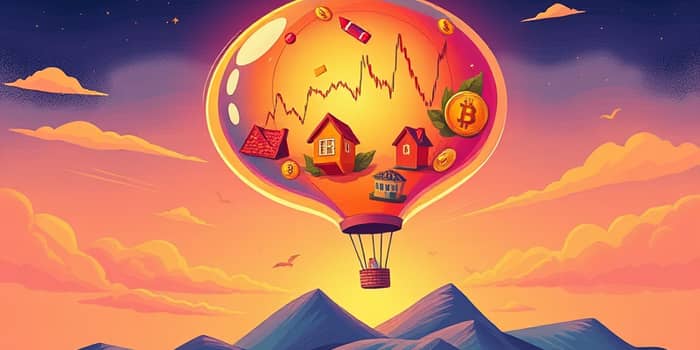
Market bubbles have shaped economic history, fueling booms and devastating crashes. Recognizing their patterns can empower investors to navigate risk and opportunity.
A market bubble emerges when asset prices soar far beyond their real worth, driven by collective psychology rather than fundamentals. This rapid escalation of asset prices detaches valuations from underlying cash flows, profits, or intrinsic measures.
Speculative bubbles thrive on belief in never-ending growth and a disregard for actual results. Investors convince themselves that the current environment is unique, overlooking historical lessons.
Studying past bubbles reveals recurring themes of euphoria and collapse. Though separated by centuries or continents, they share an anatomy of unsustainable growth.
Most financial bubbles follow a predictable lifecycle. Understanding each phase can help investors identify turning points before it’s too late.
Several forces converge to inflate a bubble. Chief among them is the abundance of cheap credit and a collective belief in perpetual gains.
Excess liquidity and low rates encourage borrowing and asset purchases. When money costs next to nothing, risk-taking surges and valuations soar without regard to fundamentals.
Herd behavior and speculative frenzy amplify price moves. As more participants chase returns, fear of missing out fuels rapid inflows into overheated markets.
Spotting warning signals early can mean the difference between profit and severe loss. The following checklist highlights key alerts observed in recent cycles:
Today’s market bears striking resemblance to past bubbles. Technology and housing assets have enjoyed years of rapid growth, prompting comparisons to dot-com and 2008 mania.
The rise of AI and speculative altcoins has created stories potent enough to drive prices unchecked by earnings. Yet history teaches that narratives alone cannot sustain permanent value.
While predicting exact timing of a crash is impossible, prudent approaches can mitigate risk and preserve capital.
By combining historical insight with disciplined risk management, investors can navigate market cycles more confidently. Recognizing classic warning signs and indicators empowers individuals to act before exuberance turns to panic.
Ultimately, bubbles remind us that markets are driven by human emotion as much as by economic fundamentals. Developing an objective, analytical mindset—and keeping emotions in check—remains the most effective defense against speculative excess.
References













